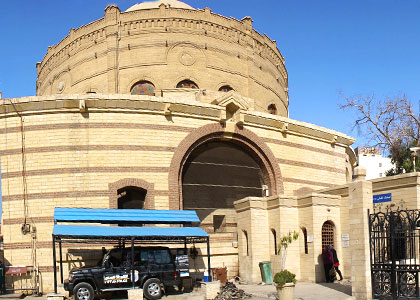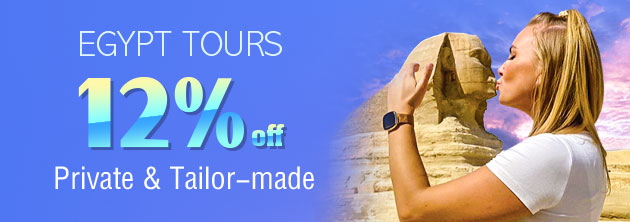Coptic Museum
This is a prominent landmark of the history of Egypt and assurance of the immortality of Egyptian art. Its Great inheritance is for all generations. Actually, the Coptic origins in Egypt are inspired by the visit of Saint Marcus Simaika Pasha to Alexandria city in the first century. So inside the Coptic Museum, you can notice a great mix of antiquities of Coptic art and other prevalent cultures like Pharaonic, Greek, Roman, and Ottoman cultures.The museum was established by Marcus Simaika in 1910 to help all people know about Christian history in Egypt. In this article, we will introduce all information related to Coptic museum including location, antiquities, renewals, and all its sections.
Location and Establishment of Coptic Museum

|
Historical Significance of Coptic Museum
Coptic Museum is considered one of the most famous museums over the world because of its special and unique establishment that aims to give information to all people who are interested to enjoy the spirituality of the Egyptian Christian artifacts. The museum gathers the Coptic art and the old Byzantine, and Islamic Egyptian traditions.Since the establishment of the museum in 1910, it has collected a lot of antique materials and documents that help in studying Egypt history from the occurrence of Christian faith until now. Thanks to Marcus Pasha, the founder of Coptic museum, who did special efforts with great believe that this place will play a vital role in presenting an important period of the history of old Egypt. During that time, there was the Egyptian Museum for Pharaonic antiquities, the Roman Museum in Alexandria and the Islamic Museum in Cairo. Therefore, the establishment of the Coptic Museum becomes necessary to illustrate the Christian antiquities of that historical period in Egypt.
Renovation
Still, the most important event related to the Coptic Museum is the tying of the old section with the new one through a passage in 2005. Thus it is divided into 26 rooms to display all the antiquities. The Coptic Museum becomes distinctive by its way of presenting all artifacts, decorated manuscripts, artworks, and the inscriptions on the walls. After the renovation, it reopened in 2006.Collections and Exhibits of Coptic Museum
The Coptic Museum includes more than 16,000 collections with different kinds and these collections are arranged in about 12 sections. There are also great exhibits displayed in chronological order. One of these important exhibits is David Psalm's book which has a special separated room. In addition to that, you can also see Al Qalalii Paintings which are used by the monks inside the Abbey.There are 3 pieces of wood that are most famous and have great importance in the study of sculpture between the 4th and 6th centuries. In addition to some wooden antiquities, the doors during that period also reflect the Coptic art.
|
|
|
Besides, the room that contains churches of Egypt displays the most important pieces of every church in the old Egypt like the pending church.
Inside the Coptic museum, we can also find the antiquities of the Anahasi area. These artifacts are inspired by Roman artifacts including Afrodit, the Symbol of beauty. The sixth room has several frescoes that decorate all walls of the Coptic Museum. Near this room, there is an in-house park and the general view of the room looks like a church.
On the other hand, the second level includes the collection of the bronze stone with the Hawk symbol on it. There are also golden artifacts that are discovered 25 years ago. Another room has some highlights that tell stories about Bible through the new era and other highlights tell stories about the religion through the old era, plus a special picture that expresses the story of Adam and Eve and their exit from heaven.
In-House Sections and Icons in the Coptic Museum
 Wood Section:
Wood Section:
The most important highlights in this section are the wonderful collections that contain the Nile views and paintings for some persons. The museum also contains a prominent group of wooden antiquities which the Coptic Museum has obtained in 1947 and these ones are considered the oldest kinds of woods that have special inscriptions on it.
 Stones Section:
Stones Section:
This section is distinctive by the remnants related to different Christian eras from several places.
 Manuscripts Section:
Manuscripts Section:
Inside the library of Coptic Museum, there are about 700 books and about 1,000 documents that have linen papers.
 Textile Section:
Textile Section:
A unique collection that is kept inside Coptic Museum which enjoys a variety of textiles from all Coptic eras and also helps in the study of textile art through the Christian era.
 Wicker and Leather Section:
Wicker and Leather Section:
A special section that introduces crafted works with a variety of shapes like small chains that are made of Colored hays.
 Ivory Section:
Ivory Section:
This one contains several statues and small Dummies with ornamented shapes.Other sections are available inside the Coptic Museum and this museum is the most prominent one in Egypt that gives massive study for the Christian history in Egypt.
Reaching the Coptic Museum
Coptic Museum is located on 3 Mary Griggs Street, old Cairo. It is very convenient to get there by subway and the nearest metro station is Mar Girgis.Timings
9 am to 5 pmTickets
![]() Adult: 100EGP
Adult: 100EGP
![]() Students: 50 EGP
Students: 50 EGP
![]() Note: Special tickets are needed for photography.
Note: Special tickets are needed for photography.


